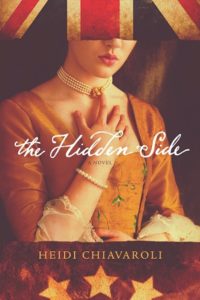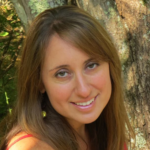This novel explores some devastating events and topics—a school shooting, the loss of loved ones, and division within and among families. Why did you choose to tackle these difficult issues?
 After I brainstormed with a couple of my author friends and my agent and editor, I saw the story before me, but absolutely balked at the idea of writing it. This was difficult stuff. Didn’t my readers see enough of the difficult when they turned on the news? Wasn’t it my job to give them an escape from the harsh realities of life?
After I brainstormed with a couple of my author friends and my agent and editor, I saw the story before me, but absolutely balked at the idea of writing it. This was difficult stuff. Didn’t my readers see enough of the difficult when they turned on the news? Wasn’t it my job to give them an escape from the harsh realities of life?
Honestly, I didn’t wrestle with this for long. Since I first began pursuing publication, I knew my stories would not be the sweet, easy ones. There is darkness in this world, and as a writer who longs to bring truth into it, I can’t in good conscience ignore the darkness. I can, however, bring hope into it.
The funny thing about hope and good news is that it shines more brightly in the darkness. So when I write about a bombing or a historical war, when I write about the unspeakable actions of a family member or a heart torn apart by addiction and suffering, in part, it is what I relate to. It’s where despair tends to trip me up in this messy, broken world.
BUT there is hope. And that is where I choose to cling, and it is this message that burns in my heart to bring forth to my readers.
The Hidden Side features three main characters: Natalie and Maelynn Abbott of modern-day New York, and Mercy Howard of colonial New York. Which character did you personally relate to the most? Which character surprised you the most?
Writing Natalie’s character made me an emotional wreck. I think this was because I could relate to her so well. And though she goes through something no mother should ever have to go through, my mother’s heart was ripped apart when writing her character.
I can imagine what it’s like to have a troubled son, a prodigal son. I know what it’s like for a child to dread going to school because of bullying issues. I also know what it’s like to be held to a certain standard and to not measure up. In these ways, I could very much relate to Natalie.
Maelynn was definitely the character that surprised me most. When I began writing, I didn’t know her place in the story, but as it progressed, she became central to it. She surprised me not only with her honesty, but how she grew throughout the story as well.
Your novel gives readers permission to have questions about their faith. Why do you think this is important?
 I think if we’re honest, we all struggle with doubts and questions once in a while. It’s that in-between dilemma again—that place between the now and the will-be promise that God has given us, that place where our real selves are hidden with Him.
I think if we’re honest, we all struggle with doubts and questions once in a while. It’s that in-between dilemma again—that place between the now and the will-be promise that God has given us, that place where our real selves are hidden with Him.
If we ignore our questions and doubts, we’re not being real with ourselves or with God. And so often, in my experience, doubt has been a threshold to a deepened faith. Our God doesn’t need a fake faith. He’s the Almighty, the Creator of all things. He can handle our doubts and questions. Really. And I absolutely believe He will use them to strengthen us as He did for Thomas, Abraham, and many others in Scripture.
Click through to discover why Heidi felt the need to include forgiveness and reconciliation as core themes of her novel…


